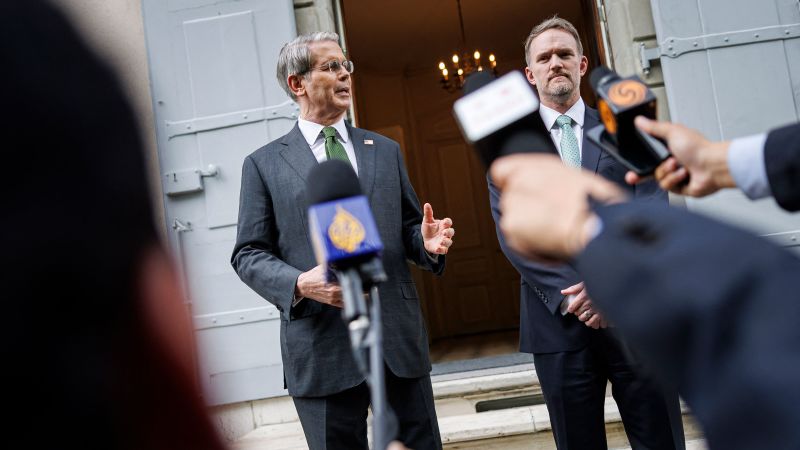In recent developments surrounding US-China trade negotiations, stock futures experienced an upswing on Sunday, buoyed by comments from Treasury Secretary Scott Bessent. He indicated that “substantial progress” had been made in ongoing discussions with Chinese officials. This optimism comes as a potential respite from the tensions that have arisen due to former President Donald Trump’s stringent tariff policies imposed on Chinese imports.
As of 7:45 PM ET, the Dow futures saw a remarkable jump of 1.03%, which translates to an increase of 427.66 points. Similarly, the S&P 500 futures rose by 1.31%, amounting to 75.8 points, while the technology-focused Nasdaq Composite futures witnessed an even more significant upsurge of 1.71%, equating to 348.19 points. These increases reflect market sentiment favoring a resolution that could alleviate the trade dispute between the two economic giants.
Further details reveal that Secretary Bessent, alongside U.S. Trade Representative Jamieson Greer, participated in meetings in Geneva, Switzerland, where they engaged with Chinese officials. This dialogue followed President Trump’s striking decision to implement an aggressive 145% tariff on a majority of Chinese goods, propelling China to retaliate with a 125% tariff on American products. The oscillation in the market has been undeniable in recent months, driven by the turbulence associated with Trump’s fluctuating tariff strategies.
The Sunday market gains indicate growing investor optimism regarding a potential trade agreement which might not only stabilize but also reinvigorate both the U.S. and global economies. There is anticipation that U.S. officials will unveil a more concrete framework for the trade deal on Monday morning. This comes on the heels of Trump’s announcement of a separate agreement with the United Kingdom made just days prior.
It is crucial to note that while tariffs between the U.S. and China are likely to persist, they may not be administered at the extreme levels established in April. Commerce Secretary Howard Lutnick confirmed during an appearance on CNN’s “State of the Union” that discussions with other countries would not allow for tariff rates below 10%. The recent trade arrangement with the UK has solidified this percentage, which Lutnick specified would be maintained for the foreseeable future.
After a period of considerable uncertainty stemming from the unpredictability of Trump’s tariff policies, indicators suggest a troubling decline in consumer confidence. Additionally, reports stated that the nation’s gross domestic product (GDP) registered its first quarterly contraction since early 2022. Notably, analysts at Goldman Sachs expect a critical inflation gauge to double, reaching a worrying 4% by year-end due to the sweeping tariffs in effect.
Positively, an easing of the trade tensions with China is viewed as a favorable development. The announcement made on Sunday arrives shortly before American consumers might encounter increased prices on major goods or potential shortages on store shelves.
However, the broader implications of these tariffs and trade negotiations remain largely unpredictable. As cargo ships from China enter U.S. ports, they are now subject to the new high tariffs, which have already prompted a substantial decline in Chinese imports. Reports from Gene Seroka, executive director of the Port of Los Angeles, confirmed that imports from China have diminished by over 50% since the new tariffs were put in place.
In conclusion, while recent advancements in U.S.-China trade discussions have sparked a momentary market uplift, the long-term consequences of tariff policies and their effects on consumer behavior and economic stability remain to be fully realized. As circumstances continue to evolve, it will be imperative to monitor both domestic economic indicators and global trade dynamics to understand the full impact of these agreements as they develop.



